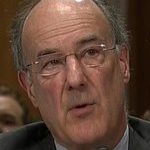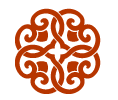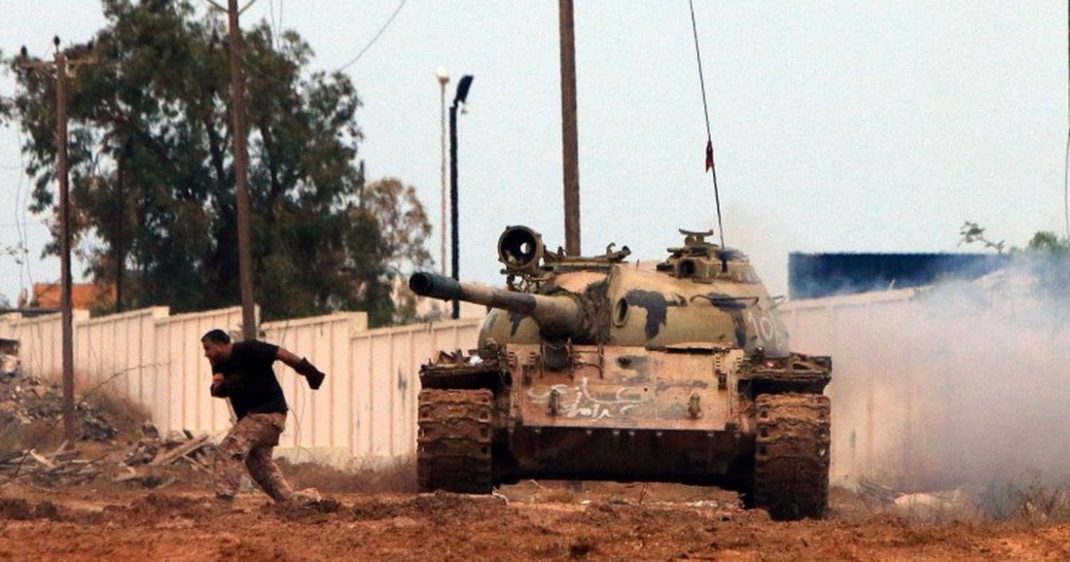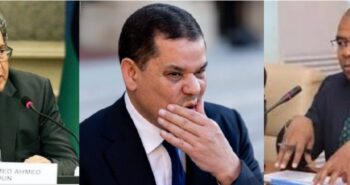By Jonathan M. Winer
 In the 42 years preceding the 2011 uprising, Gaddafi controlled all power in Libya. Since the uprising, Libyans, fragmented by geography, tribe, ideology, and history, have resisted having anyone, foreigner or Libyan, telling them what to do.
In the 42 years preceding the 2011 uprising, Gaddafi controlled all power in Libya. Since the uprising, Libyans, fragmented by geography, tribe, ideology, and history, have resisted having anyone, foreigner or Libyan, telling them what to do.
PART TWO
PRIMARY DOMESTIC ACTORS
Gaddafi’s ouster created new opportunities for a range of Libyans who previously had been foreclosed from exercising political power.
For the first time, without any previous experience, Libyans as a society would determine how their oil wealth (some $25 billion a year) and national savings ($150 to $200 billion) would be spent.
As a result, from early 2012 on, numerous contestants vied for control of governance, territory, money, and oil resources.
These included a wide scope of contesting forces, some more politically focused, and some principally military.
POLITICAL GROUPS:
• Political elites who had done well under the Gaddafi regime, including successful importers of foreign goods, government contractors, and some technocrats.
• Local politicians spread across Libya’s coast representing largely local interests, such as the Misratan business community.
• Tribal leaders from important families at the local level, along the coast, and representatives of the Tuareg and Tubu in the south. The role of these was elevated under Gaddafi as a foundation for society as a whole, especially to dispense patronage and to adjudicate disputes.
• Heads of nascent political parties of varying ideologies, including political Islamists.
• Highly-educated Libyans wanting to exercise political freedom for the first time, including highly educated Libyan women who had more in common with Italian women of their generation than with Libyans living more traditional lives.
SECURITY FORCES:
• Remnants of the Libyan Army under Gaddafi, some of which coalesced in the east over the summer of 2014 under the leadership of General Khalifa Hifter, with Egyptian and Emirati backing.
• Heads of militias, whose continued power depended in no small part on their ability to deliver salaries to anyone who had been a member or could claim that they had. (The number of the latter ballooned dramatically due to these payments, from around 30,000 that actually fought against Gaddafi’s forces in 2011 to an estimated 250,000 by 2014.)
• Local Salafist Islamist extremists and terrorists, including but not limited to Ansar al-Sharia and the groups that coalesced into the Benghazi Revolutionaries Shura Council in 2015. Elements of at least the former were among those responsible for the death of U.S. Ambassador to Libya Christopher Stevens and three other Americans in Benghazi in September 2012.
• International terrorist groups with Libyan components, including al-Qaeda in the Islamic Maghreb and later, ISIS. These included foreign fighters with ideologies and experiences derived from beyond Libya, who applied a level of violence and brutality that went well beyond the limited blood-letting between other competing Libyan forces.
• Petroleum guards with tribal ties, seeking to extort a greater share of revenue from the oil they were responsible for protecting, in both the west (Zintan) and the east (Ajdabiya).
• Criminal gangs, including kidnappers and smugglers.
Instead of institutions to govern the country, what Libya had was a lot of oil wealth and many contenders seeking to claim it, none with uncontested legitimacy at the national level, or the ability to enforce it
through control of coercive force. (Libya’s national army was largely destroyed by a combination of bombing by NATO forces and militia seizures during the ten months of 2011’s civil war.)
Generally, with the exception of the criminal and terrorist groups, who were typically hated throughout Libya, no one was particularly more legitimate than anyone else. As a result, competition over power and resources, with no arbiter, brought Libya increasingly weak governments.
Whoever emerged from negotiations over the exercise of leadership in Libya’s transitional governments was inevitably a compromise candidate, chosen precisely because they would be unlikely to affect the balance of power among all forces participating in the political process.
A description of the National Transition Council’s chairman, Mustafa Abdul-Jalil, in office until summer 2012, could stand in for a description of Libya’s appointed leaders generally: “Most Libyans agreed . . . he was a man of principle, but it was frequently unclear what, if anything, he did.”
Unprincipled persons also found positions of power, which were used as leverage to gain more and to oust opponents. A critical watershed came after the legislature in Tripoli was established in July 2012, when it was intimidated into enacting a political lustration law in May 2013, preventing anyone with even a remote connection to the Gaddafi regime from holding public office during the country’s transition.
The action was widely seen as vengeance and one-sided justice by “Islamists” aiming to deal a fatal blow against anyone competing for power who they could label as “Gaddafites.” The lustration law covered anyone who had worked for Gaddafi, even if
they had participated in and supported the revolution. In practice, it meant that those subject to the law were both delegitimized and removed from politics.
It allowed those responsible for enacting the law, which occurred while armed guards from local militias helpfully watched over the proceedings, to consolidate their power by wiping out their opponents. This action paved the way for the civil conflict that followed a year later.
Western diplomats working on Libya generally agreed that their biggest collective mistake after the revolution was the failure to take action in May 2013 to refuse to recognize the lustration law for what it was: a power grab.
It was a period in which U.S. policy had yet to recover from the death of Ambassador Stevens eight months earlier, and no ambassador was yet in place. Things were not made better by the American absence.
PRIMARY FOREIGN ACTORS
Broadly speaking, the involvement of international powers and regional actors contributed to dividing the country and made it more difficult to undertake a credible process of national reconciliation.
While France, the U.K., and the U.S. were all deeply engaged in the air war to oust Gaddafi, thereby functionally destroying his ability to contain the revolution, at the end of the conflict, these and other European powers largely retreated and did not seek to exercise control over events in Libya.
Instead, they offered a broad menu of assistance programs in every sphere (political, economic, and security), essentially all of which failed. It was left to private sector interests to exploit the contracting
opportunities which first blossomed amid an orgy of Libyan spending, and then quickly withered.
By contrast, regional actors developed favored clients, based on a mixture of ideological and geographic ties. Egypt, Saudi Arabia, and the UAE on one side and Qatar and Turkey on the other helped fuel the conflict by covertly providing military support to their clients.
Qatar supported Islamists with money and military aid through Sudan. Turkey engaged in relationships going back geographically to Ottoman times with friendly groups, primarily in Misrata and Tripoli.
And from the summer of 2013 onwards, Egypt and the UAE, with support from Saudi Arabia and Jordan, worked with forces which previously had been associated with Gaddafi and against anyone who smacked of Mohammed Morsi’s Muslim Brotherhood in Egypt, ultimately becoming the political and security backers of General Hifter’s Libyan National Army (LNA), operating from bases near Tobruk, close to the Egyptian border.
The competition between forces backed by Qatar and Turkey on the one hand, and by Egypt, the UAE, Jordan, and Saudi Arabia (and later, Russia) on the other hand, played a substantial role in the ultimate splitting of the country into two governments in June 2014, neither of which controlled much territory outside their respective capitals of Tripoli in the west and Tobruk in the east.
The decision by ISIS to enter Libya soon thereafter and to supplement the largely domestic al-Qaeda entities and their affiliates with foreign fighters from Syria and Iraq focused the attention of these regional actors.
It also played a role in Algeria becoming further involved in efforts to reach a political accord, which in turn led to greater engagement from Morocco on the same mission. The ongoing competition between the governments of these two countries played out in a constructive fashion for Libya, as both saw a stable Libya as in their national interest.
For Algeria, this was a matter of protecting its border from terrorism and Islamic extremism, as well as reducing the risks of foreign military intervention.
For Morocco, engagement brought with it an earned “equality” with Algeria on Libyan matters.
Simultaneously, the ISIS threat, together with the development of systematic criminal activity to smuggle migrants into Italy by local militias on the coast, especially in western Libya, drew renewed focus by Italy, France, and the U.K., as well as the U.S. Combating terrorism was not an academic concern for the U.S. after the tragic murder of Ambassador Stevens and three other Americans at the U.S. consulate in Benghazi on September 11, 2012.
In response to these developments, there was renewed energy applied to the political process led by the United Nations Support Mission in Libya (UNSMIL) through a new SRSG, Spanish diplomat Bernardino Leon, appointed in the autumn of 2014 after it became clear that the existing SRSG, Tarek Mitri, was making no progress in securing a compromise among the contesting forces.
…
continues in Part 3
***
Jonathan M. Winer has been the United States Special Envoy for Libya, the deputy assistant secretary of state for international law enforcement, and counsel to United States Senator John Kerry. He has written and lectured widely on U.S. Middle East policy, counter-terrorism, international money laundering, illicit networks, corruption, and U.S.-Russia issues.
______________
Middle East Institute





